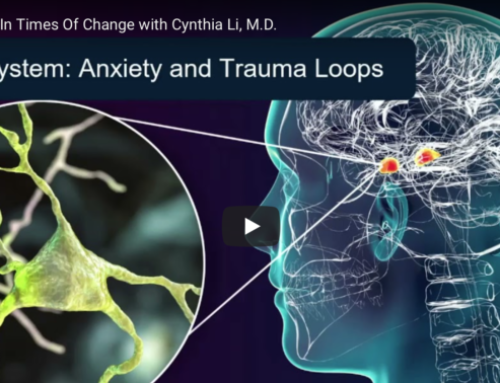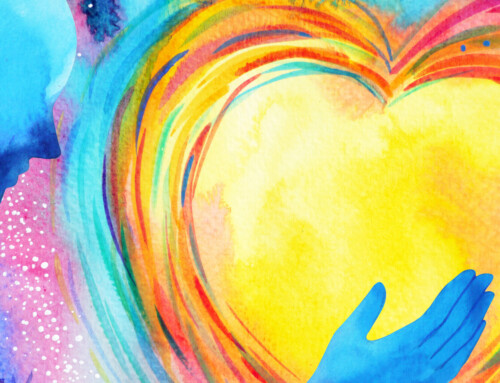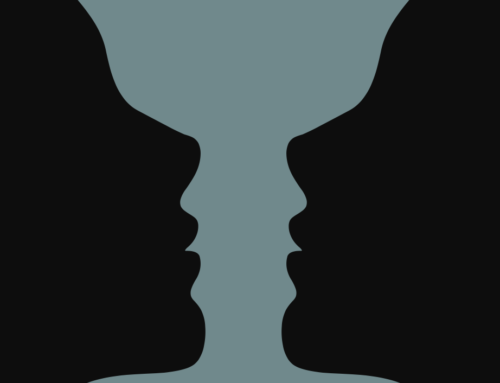This is the second in a series of articles: Enduring Wisdom in Times of Great Change.
In the spring of 2013, during my decade+ journey with chronic fatigue and vertigo, I stumbled across the work of Francis Weller, a grief therapist and self-described “soul activist,” who facilitated daylong grief workshops. Though wrestling in the muddy realm of the soul with strangers was hardly how I wanted to spend one of my weekends, I imagined there were invisible, inaccessible stresses I had to contend with. Stresses that made me unpleasantly reactive instead of thoughtfully responsive. Stresses that kept me in a fearful state rather than a healing one. What is chronic fatigue, anyway, but a pseudo-perpetual state of PTSD in the body?
In functional medicine, we look at diseases of the body (and larger ecosystems) at their root causes. The primary drivers of disease fall into 5 categories: infections, allergens, pollutants, inflammatory foods, and stress. Grief is a large driver of chronic inflammation. And chronic inflammation drives chronic disease.
The time felt ripe for a major “soul detox.”
Back to the Future
Fast forward to the present, June, 2020. 3 months into a novel coronavirus pandemic. A few days into widespread protesting as well as rioting, in response to the murder of an unarmed African-American man by a police officer and too many other such tragedies. The words of American novelist and activist James Baldwin remain as urgent today as ever: “I imagine one of the reasons people cling to their hates so stubbornly is because they sense, once hate is gone, they will be forced to deal with pain.”
I’ve been feeling my shoulders tense, my heart broken, and my mind a whirlwind of shoulds, shouldn’ts, and what-ifs. Yet, as I reminded myself to tap into wisdom I learned on my healing journey, I remembered how being “forced to deal with pain” may be simpler than we’ve made it out to be. If we had tools to confront pain without falling into despair, perhaps we can transform toxic thoughts and emotions, too. Perhaps, even, we wouldn’t recycle the same pains over and over again.
“I imagine one of the reasons people cling to their hates so stubbornly is because they sense, once hate is gone, they will be forced to deal with pain.” –James Baldwin
Are Pain and Grief the Same?
Pain can be physical, emotional, or mental. When pain becomes chronic, we call it suffering. A patient, by the root definition of the word, is one who suffers. I know what it’s like to be a patient. As a doctor, I see many patients, many sufferers.
I’d often used interchangeably the terms “suffering” and “grief.” But are they the same?
Grief is deep sorrow, usually in response to loss. Grief and anger are intricately linked; anger may be one stage of the grieving process.
Having attended several grief rituals, I learned from Francis that many indigenous cultures don’t equate grief with suffering. Grief is not a problem to be solved, he explained, but a human experience to be witnessed. He told a story about an elder-woman whose countenance radiated joy. Francis asked her what her secret was. “I’m joyful because I cry a lot.”
The act of grieving, in their eyes, isn’t optional. It’s a necessary release. Just as we need to slough off dead skin cells or filter out old blood cells to make way for the new, the same goes for emotions and trauma, conscious and subconscious, internal and external, individual and collective. If we grieve regularly, we don’t even have to go into the stories themselves. The body can release the patterns de facto.
Grief is not a problem to be solved, but a human experience to be witnessed.
The 5 Gates of Grief
Beyond the loss of a loved one, or the loss of our health, there are other forms of grief. Francis describes the following 5 gates:
- What we have loved and lost
- The places in us that have not known love (our shadows)
- The sorrows of the world
- What we expected and did not receive
- Ancestral grief
One of the primary reasons in the West is because we’ve privatized it. If we don’t have a community to witness the process as so many cultures before us did, we risk falling into depression or despair. If we don’t grieve enough, we risk suppressing the grief. According to Francis, suppression risks health problems or volatile emotions like anger.
The primary “sins” of the West are amnesia and anesthesia. We forget, and we go numb.
2 Simple Rituals to Release Grief and Make Room for Joy
So how do we coax our shy, neglected souls out of hiding and into release? Here are 2 practices I learned, as excerpted from Brave New Medicine. The first requires a partner. The second can be done with someone or alone.
1. Timed automatic writings
Find a friend or a family member whom you trust, in person, by video, or by phone. Find a private space where you won’t be interrupted.
Decide on the length of time for the writing exercise (suggested: 5, 8, or 10 minutes).
Set the ground rules: complete confidentiality of what is shared.
Choose a starter phrase, which will be the thread in the exercise. Some examples: I remember when…, My tears…, I wish someone would…, What I meant was…
Once the exercise begins, each person must write continuously. No stopping, no crossing out, no erasing, no rereading. If your mind is a blank, you can write exactly that: My mind is a blank, repeatedly, or Nothing is coming up, Nothing is coming up… until something comes up. By removing the capacity to edit yourself, you silence your judging mind and allow your soul or subconscious to emerge.
When the designated amount of time is up, stop. Don’t finish your sentence, or even cross your T. Sometimes you can glean significance from the precise point at which you stopped.
Take turns reading your words to each other. The listener practices “generous listening,” which means full attention without interruptions, questions, or comments (if you find yourself forming a response in your mind, try to let those thoughts go; even approval is a form of judgment, because it shapes the other person’s thoughts). When the reader finishes, the listener simply says, “Thank you for sharing.” Then switch roles.
You can end your session now, or repeat the exercise with a different starter phrase.
After you finish, make an agreement: no sharing of what was read, and no referencing in the future, unless the reader himself or herself brings it up.
2. Speaking to the earth
You may do this alone, or invite witnesses to silently hold the space for you. This practice is common among many cultures around the world.
First, find a space in nature that feels safe: a corner in your backyard, or a place in greater nature, like a forest, a creek, a beach.
Then dig a small opening in the earth or sand, large enough to speak (or cry) into.
Feel the earth below you, allowing it to support all your weight.
Say your grief into the earth. Here is an example Francis gives in his book, The Wild Edge of Sorrow: “I have been carrying this grief [be specific—name the emotion or experience] for so long, and I cannot hold it any longer. It is too big for me. It is weighing me down and depriving me of any joy. I know you can hold this sorrow…. I do this to set down my sorrows so I can better participate in the mending of our community. Thank you for being here for me and all of us.”
Consider lying down prostrate to cry or scream your grief into the earth.
When you finish, fill the hole back up, returning it to its former shape, and thank the earth for being your holder.
The first article in this series–lessons from midwife and elder Yeshi Neumann–can be found here.






Thank you Cynthia, your words speak to me in so many ways.
Im on the journey.
xx
Blessings, Lina. We walk together!
Dr Li, I have ME/Cfs and would love to be on your list.
Bless you, Linna. (And apologies for the delayed response. I’m not good at blogging technicalities and just saw your reply to another comment) You can sign up for my newsletter and events, etc., on the homepage, if you haven’t already. Is that the list you’re referring to?
[…] out this amazing article that offers two different ways to release grief. It gives a little bit more understanding around grief along with the rituals – timed automatic […]
I have fibromyalgia I’m psychic and suffer with grief for my daughter who has severe autism.
I’m a child advocate and love to volunteer.
I would love to be out of pain.
It’s started at 30 I went to China twice to adopt my daughters.
I am 60 still in pain.
Your definitely a compassionate healer.
I love your service of humanity!
Jan
Loved this article. Thank you
How do I find more ideas to help you his grief?
Kim
You can find information on http://www.francisweller.net or with Francis Weller’s book, “The Wild Edge of Sorrow.”